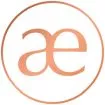The identification of new chemical or medical compounds, and the development of complex clinical schemes for treatment requires heavy investments and is very time-consuming.
A central part in protecting these types of businesses involves filing of patent applications, and recurring questions relate to the timing of filing.
Many applicants are eager to file their patent applications as early as possible to avoid scooping by competitors, minimise risk of having their own published prior art against them, or generate a legal foundation for their businesses in order to attract the substantial funding that is usually needed for e.g. the development of clinical trials.
However, a key part of supporting patent claims is technical evidence which for example is used as proof of sufficiency of disclosure and to argue inventive step.
In order to file as early as possible, many applicants rely on the option for the filing of late-filed evidence. Such evidence can e.g. be clinical outcome for patients, which normally takes years, or it can be showing that certain compounds are better than others.
In recent years, the European Patent Office (EPO) has had a focus on the topic of late-filed evidence to support an earlier filed patent application. Several cases, including T 488/16, T 184/16 and T 2015/20, have been considered by the EPO's Boards of Appeal (BoA). The most recent decision is T 116/18 that was published on 20 October 2021 (https://www.epo.org/law-practice/case-law-appeals/pdf/t180116ex1.pdf).
As always, specific decisions are focused on specific cases, but in this decision the BoA has chosen to refer central questions to the Enlarged Board of Appeal (EBA).
T 116/18 relates to the appeal filed by the opponent (appellant) against the decision of the opposition division (decision under appeal) to reject the opposition against European patent No. 2484209 (patent in suit).
Central parts of the case concern the late filing of evidence supporting a synergistic effect arising from the combination of certain compounds for use as insecticides. The synergistic effect was in opposition acknowledged as unpredictable and could therefore be used to support inventive step -even though the effect was not shown in the patent application.
However, due to the late filing of the evidence, the appellant argued that the evidence was filed too late and did not satisfy the requirement of the plausibility of the technical effect.
The requirement for plausibility is central to the EPO's evaluation of patent applications, since there can only be an invention if the application makes it at least plausible that its teaching indeed solves the problem it purports to solve.
In this respect, the filing of post-published evidence is taken into account if it is already credible from the disclosure in the patent. In other words, supplementary post-published evidence may not serve as the sole basis for the establishment of inventive step support for a claimed invention.
In T 116/18, both parties agreed that the BoA should refer the evaluation of the late-filed evidence to the EPO's highest legal authority, the Enlarged Board of Appeal (EBA).
In the proceedings, the BoA suggested key referral questions to be answered, and both parties had a chance to comment and suggest modifications.
The appellant suggested that the questions should define the effective date more clearly. For example, in case of a patent claiming priority, it should be indicated whether the relevant date was the priority or the filing date, i.e. should the evidence be in the priority filing?
The respondent suggested that an additional question should address the burden of proof for (not) achieving the technical effect, i.e. who has to show the technical effect, or lack thereof?
The BoA has in its decision finalized the questions for the EBA:
" If for acknowledgement of inventive step the patent proprietor relies on a technical effect and has submitted evidence, such as experimental data, to prove such an effect, this evidence not having been public before the filing date of the patent in suit and having been filed after that date (post-published evidence):
- Should an exception to the principle of free evaluation of evidence (see e.g. G 3/97, Reasons 5, and G 1/12, Reasons 31) be accepted in that post-published evidence must be disregarded on the ground that the proof of the effect rests exclusively on the post-published evidence?
- If the answer is yes (the post-published evidence must be disregarded if the proof of the effect rests exclusively on this evidence), can the post-published evidence be taken into consideration if, based on the information in the patent application in suit or the common general knowledge, the skilled person at the filing date of the patent application in suit would have considered the effect plausible (ab initio plausibility)?
- If the answer to the first question is yes (the post-published evidence must be disregarded if the proof of the effect rests exclusively on this evidence), can the post-published evidence be taken into consideration if, based on the information in the patent application in suit or the common general knowledge, the skilled person at the filing date of the patent application in suit would have seen no reason to consider the effect implausible (ab initio implausibility)? "
The EBA will make the final decision on the exact wording and scope of the questions. The eventual decision (likely G2/21) will realistically take at least two years.
This decision will be incredibly important to the pharmaceutical and biotech industry since it may potentially be used to evaluate the technical support of thousands of patent applications (and issued patents) that have already been filed.
We will continue to monitor this case.
The content of this article is intended to provide a general guide to the subject matter. Specialist advice should be sought about your specific circumstances.

